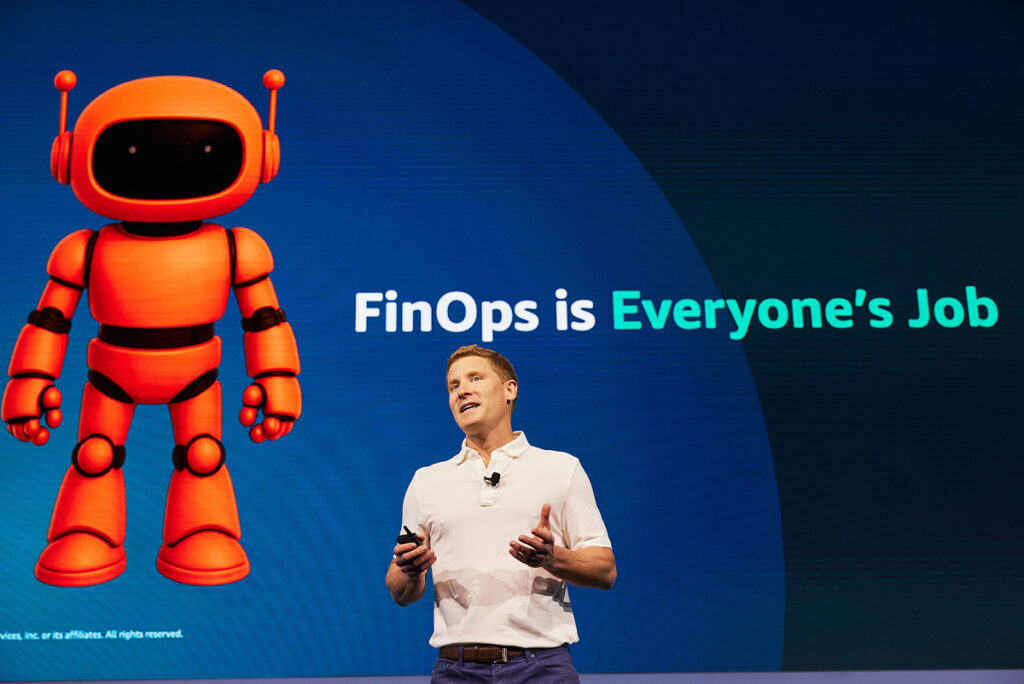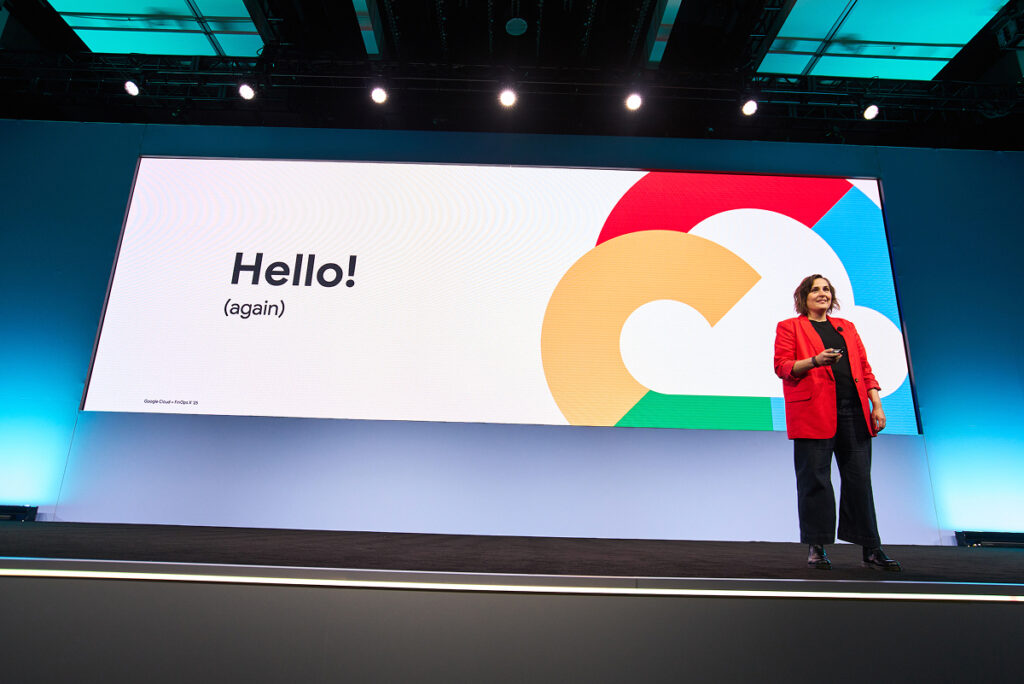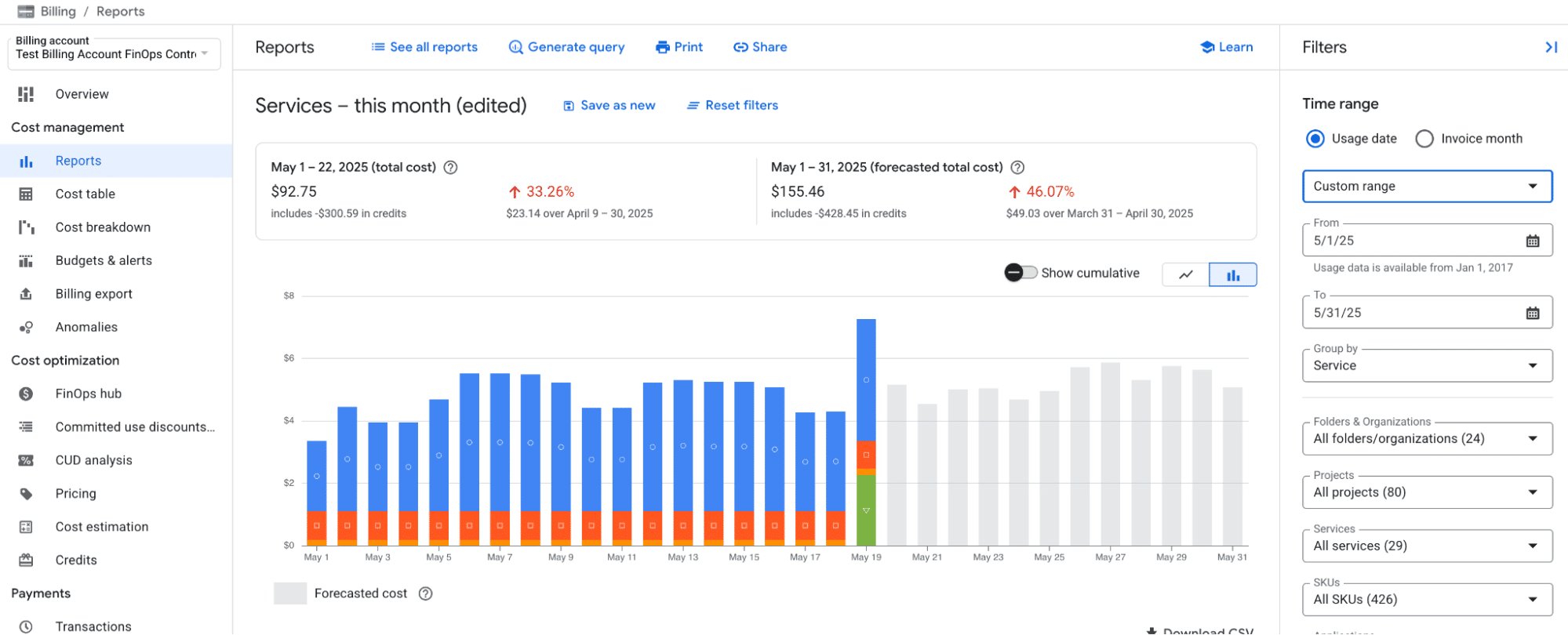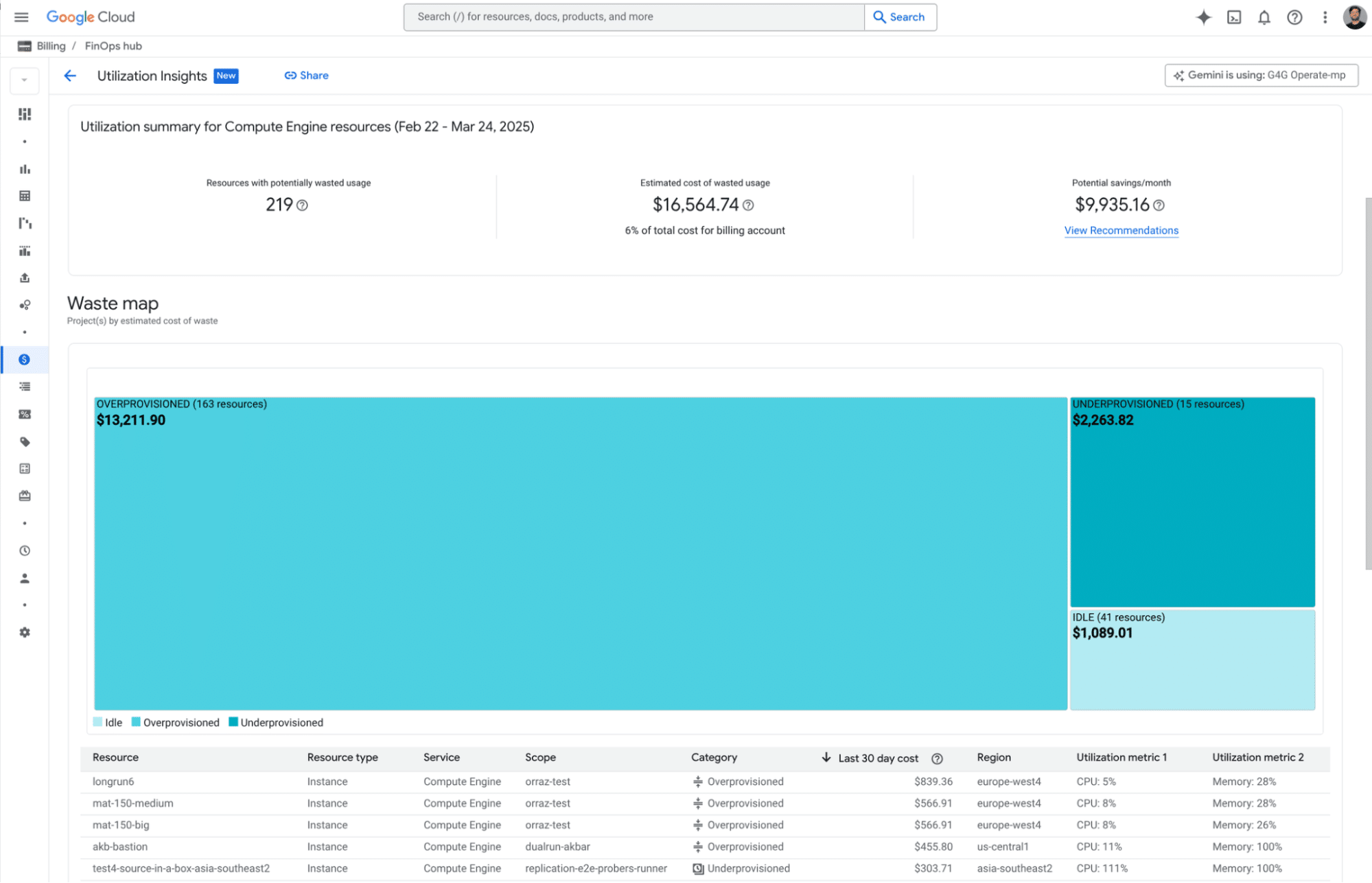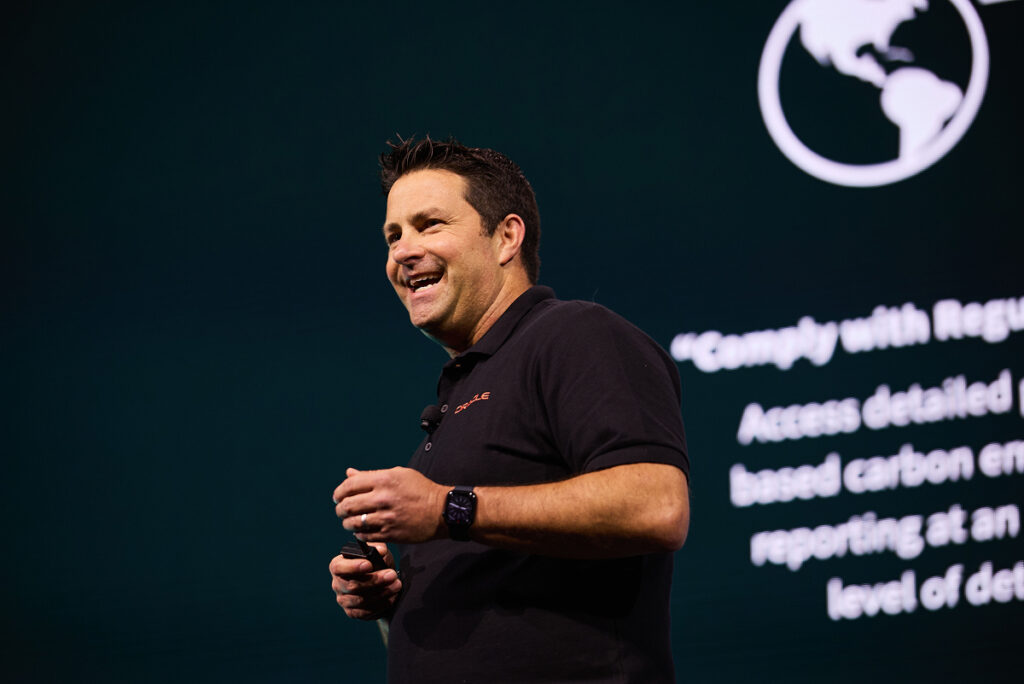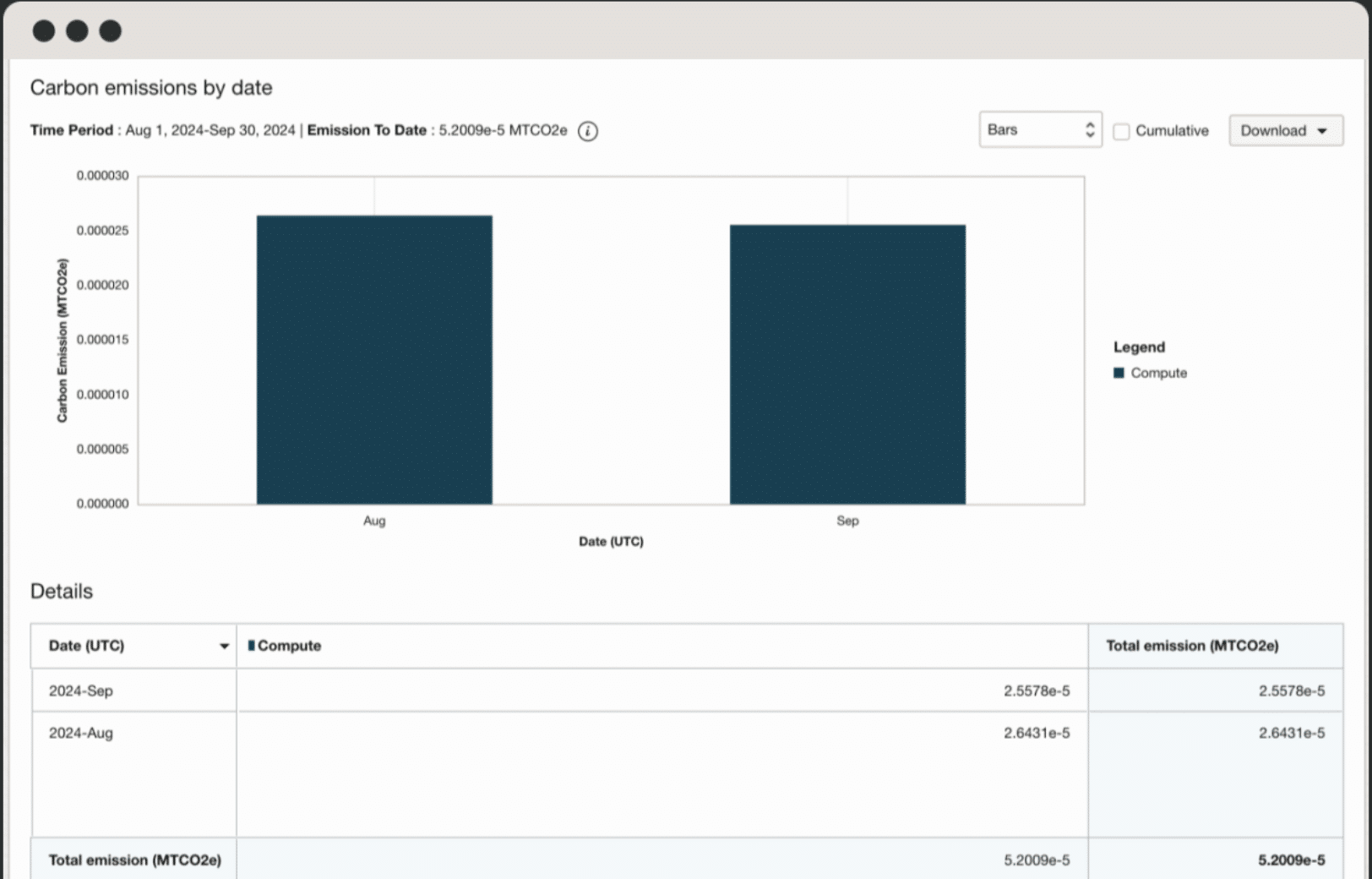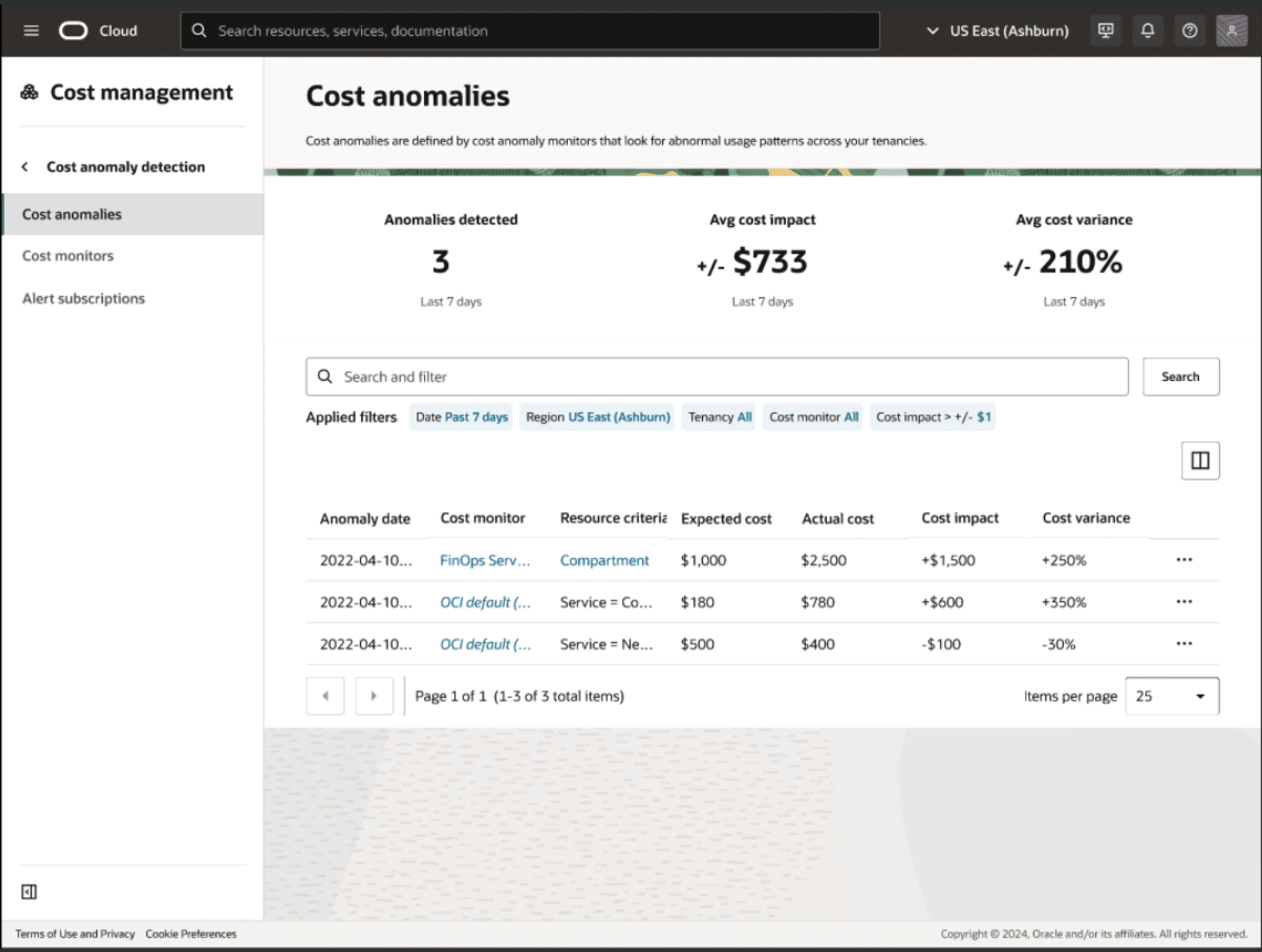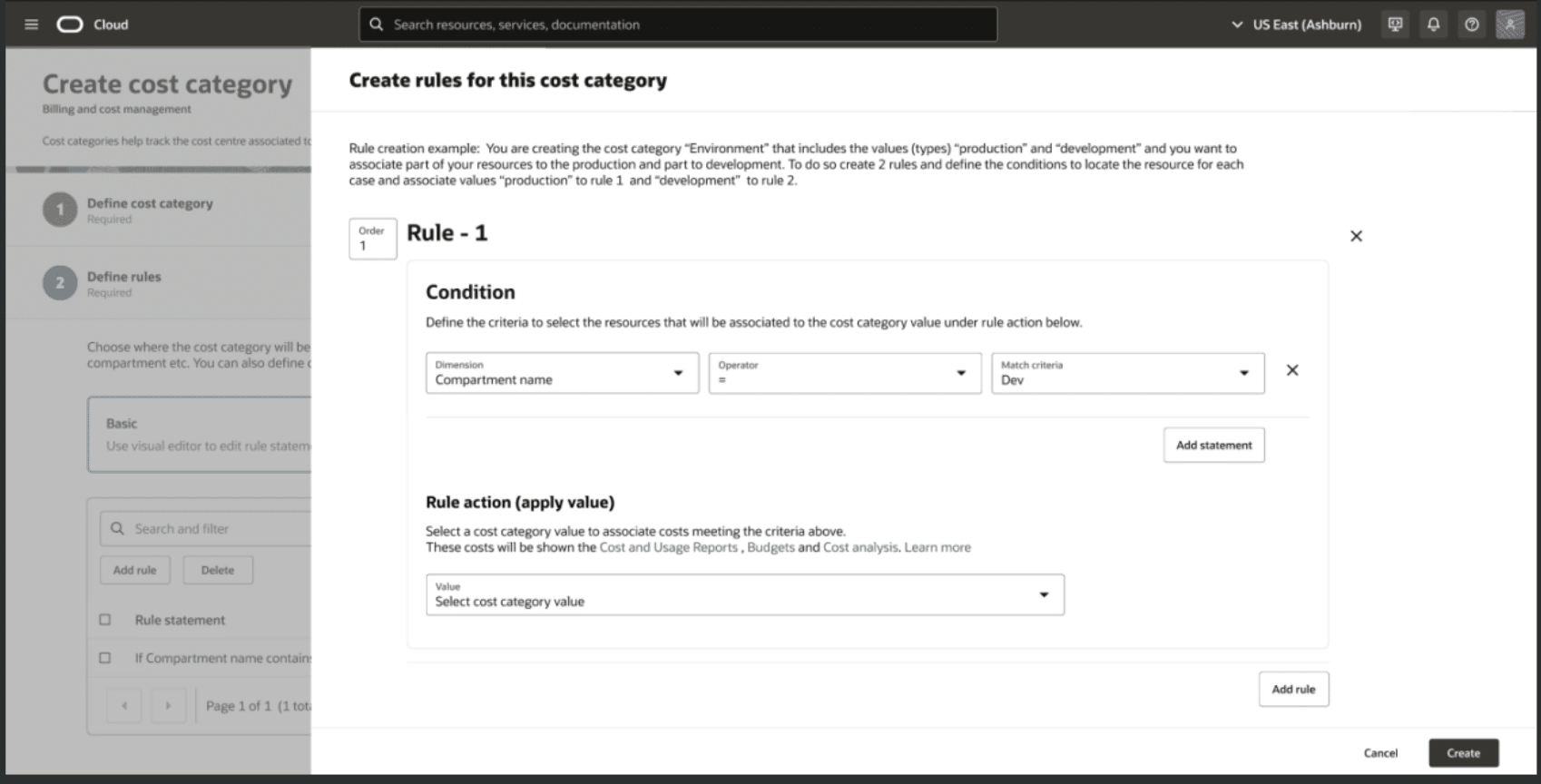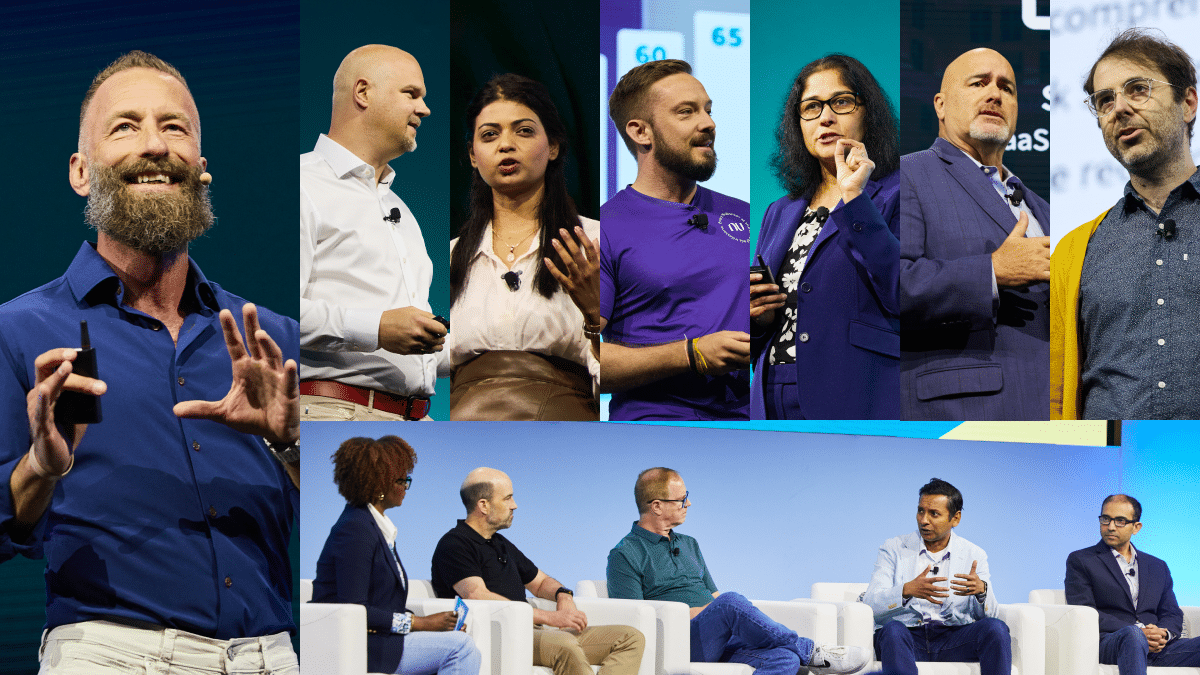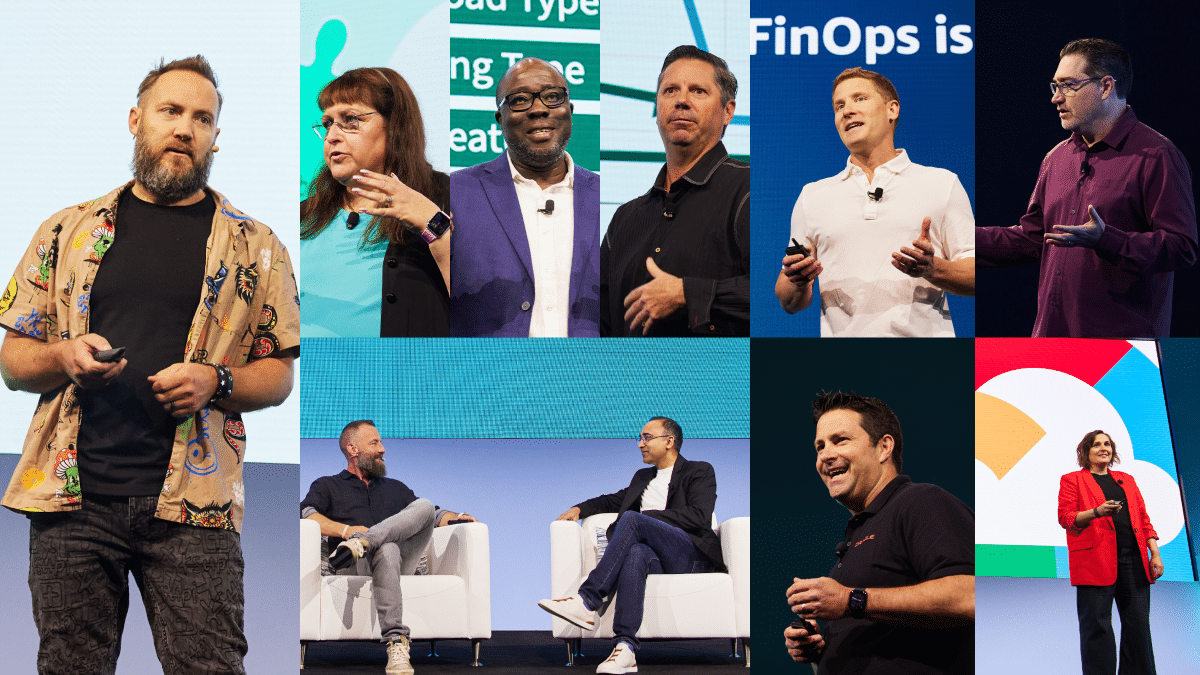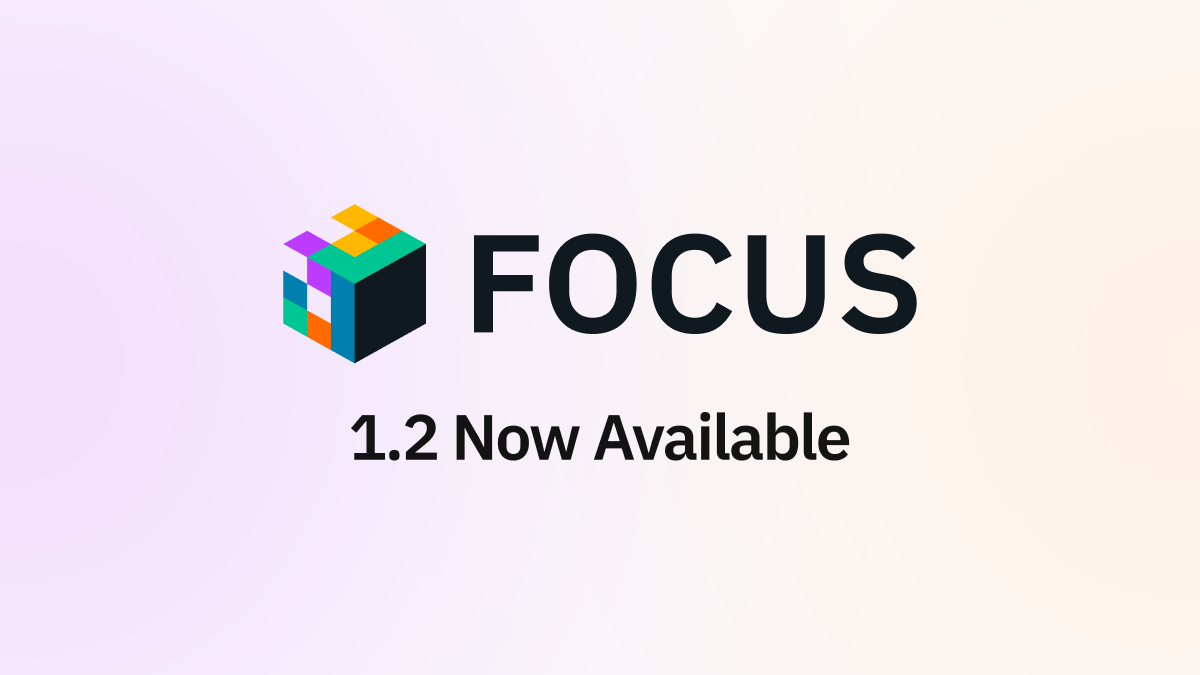KEY INSIGHT: At FinOps X 2025, major cloud providers, Amazon Web Services, Google Cloud, Microsoft, and Oracle Cloud Infrastructure, announced plans for expanded FOCUS™ support, and unveiled new product features empowered by AI which advance FinOps practitioners and improve core FinOps capabilities.
Each year, major Cloud providers join us at FinOps X 2025 to engage and learn from our warm community, but to also inform us of their latest announcements that affect and empower FinOps practices. Here are the major announcements from FinOps X 2025.
The Cloud Announcements in full from the FinOps X 2025 day 2 Keynote can be seen on the recording in this article.
Amazon Web Services
Announcing Q for Cost Optimization: Enabling AI Agents for FinOps
AWS Cost Optimization Hub is now a tool used by Amazon Q Developer to simplify cost optimization. Users can receive recommendations based on expert-validated models that scale to millions of AWS resources. This allows practitioners to see accurate savings estimates that rationalize overlapping opportunities, including explanations of recommendations and suggested action plans.
Announcing Aurora I/O Optimized Recommendations
AWS Compute Optimizer now supports Aurora I/O Optimized Recommendations. This means FinOps practitioners can automatically analyze the instance, storage, and I/O costs for Aurora Standard clusters. This feature leverages recent utilization history, uses accurate cost data, and scales to all clusters.
With these new recommendations, you can quickly identify opportunities to save cost or enable more predictable pricing for your Aurora DB clusters.
Announcing Cost Comparisons in AWS Cost Explorer
Cost Comparisons are a new feature available in AWS Cost Explorer. This feature automatically identify the largest cost changes across services, accounts, and regions. It generates detailed explanations of these changes, including shifts in usage, changes in discounts, and changes in credits. This feature reduces time to understand the reasons for cost variances.
Announcing AWS Pricing Calculator
AWS Pricing Calculator is upgraded and available in the console and API. Practitioners can accurately estimate new workloads, migrations, or application modernization costs using organization-specific rates. This enables performing “what-if scenarios” and understand the billing impact of purchase commitments.
CUDOS Dashboard Version 5.6
FinOps practitioners can access a new version of the CUDOS dashboard, introducing native support for organizational taxonomy with no dashboard customization required. This release includes a new Taxonomy Explorer that lets practitioners analyze cost across tags, cost categories, and account mappings to align with organizational structures. This release adds the ability to switch trend views between monthly, weekly, and daily comparisons, including per-cluster recommendations and savings opportunities for Amazon ElastiCache Redis to Valkey migration.
Additionally, it enhances visibility into AWS Glue and Amazon EMR usage. A new visual for Amazon Bedrock shows model unit costs, helping you better understand token-based spending. Learn more about how to deploy or update your CUDOS dashboard.
Commitment to FOCUS
AWS is engaged in the development of FOCUS specification, including in the maintainers group and Steering Committee. AWS launched FOCUS 1.0 support in general availability at re:Invent 2024, and is actively working on supporting new FOCUS versions in the coming months.
Learn more about all of the AWS releases and updates on their Cloud Financial Management blog post about FinOps X 2025.
Microsoft
New App Modernization Capabilities in GitHub Copilot
Practitioners can use AI agents to offload complex and time-consuming tasks to rapidly modernize apps. Developers will be able to offload complex and time-consuming tasks to rapidly update, upgrade and modernize apps.
These capabilities will allow you to modernize apps on Microsoft Azure faster using AI agents, from code assessment to remediating app code, configurations and dependencies, across thousands of files, reducing effort from days and months to hours.
Azure AI Foundry Agent Service
Design, deploy and scale enterprise-grade AI agents to automate business processes with Azure AI Foundry Agent Service, now generally available. It empowers developers to design, deploy and scale enterprise-grade AI agents to automate business processes. With support for multi-agent workflows, developers can now orchestrate multiple specialized agents to handle complex tasks, accelerate decision-making and boost operational efficiency.
It’s FinOps in action: AI that’s not just powerful, but built to automate.
App Modernization Guidance
Developers can make more informed, cost-effective decisions about what and how to modernize. This guidance describes an approach to application modernization that can help you accelerate AI and cloud-native development, effectively enhancing your agility, scalability, resilience, and Return On Investment (ROI).
This strategic guidance combines tools, proven technical patterns, and best practices to help IT teams to plan, execute, and accelerate a cost-effective modernization journey. By doing so, enterprises can unlock the full potential of AI and drive transformation at scale to meet evolving business priorities.
Azure AI Foundry Provisioned Throughput Reservations
Practitioners can gain flexibility and reduce AI costs by using a single PTU reservation across multiple models. Azure AI Foundry Throughput reservations turn unpredictable AI spend into planned, discounted investments despite model selection.
Customers will soon have the flexibility to apply reservations to multiple models automatically. It’s a FinOps win: forecastable costs, scalable innovation, and measurable savings.
Google Cloud
A New FOCUS™ Billing BigQuery Export (BQE) Helps Cost Allocation
Google Cloud is excited to announce a first-class Billing BigQuery Export that supports FOCUS. With this launch, Google Cloud customers can access a fully fledged BigQuery export aligned with the FOCUS format 1.0 alongside a conformance report detailing which FOCUS columns are populated.
For the duration of the limited private preview, the FOCUS export will be available at no storage cost to customers. Google Cloud customers can sign up for the preview by registering their interest using this signup form.
New Forecasting Enhancements in Cost Reporting for Increased Accuracy
Google Cloud has also enhanced its forecasting, leveraging AI for intelligent outlier handling (e.g. a new workload migration), deeper understanding of seasonality (for e.g. holiday seasons for retailers), and adaptive change to trends to remain relevant in changing environments (for e.g. new AI spend).
Gemini Cloud Assist & FinOps Hub 2.0 Targets Waste Reduction
Google Cloud has supercharged FinOps Hub with FinOps Hub 2.0, allowing customers to find waste with new utilization insights on resources (for example a VM that is barely getting used at 5%). With increased visibility into potential waste, FinOps Hub 2.0 also highlights where to focus with Gemini Cloud Assist, solving the needle in the haystack problem of optimization, facilitating quick waste insights and summarizing and sending optimization opportunity reports to engineering so action can be taken immediately.
Lastly, waste can be remediated via taking action via AI-powered cost optimization recommendations, now also supporting Kubernetes Engine clusters, Cloud Run, and Cloud SQL in addition to a myriad of Google Cloud services already available today! See the demo to learn more.
Oracle Cloud
Carbon Emissions Reporting
Oracle Cloud Infrastructure’s Carbon Emissions Reporting provides hourly power-based emissions calculation, region-specific carbon emission factors, and demonstrates compliance with Greenhouse Gas Protocol (GHGP) for emissions measurement and other global regulations.
Cost Anomaly Detection
Proactively identify abnormal usage patterns, build default and custom cost monitors, and receive anomaly alerts and insights summarizing cost impact and variance.
Cost Categories
Cost Categories feature provides rules-based cost allocation dimensions, centralized cost allocation management, 100% cost coverage, can be retroactively applicable, and users can allocate without resource access.
Catching up with FinOps X 2025
These cloud announcements are a part of FinOps X 2025, the Home of FinOps. Catch up on the latest announcements, releases, and insights with our Day 1 and Day 2 Recaps.
Topics
-
FinOps Foundation Perspectives
